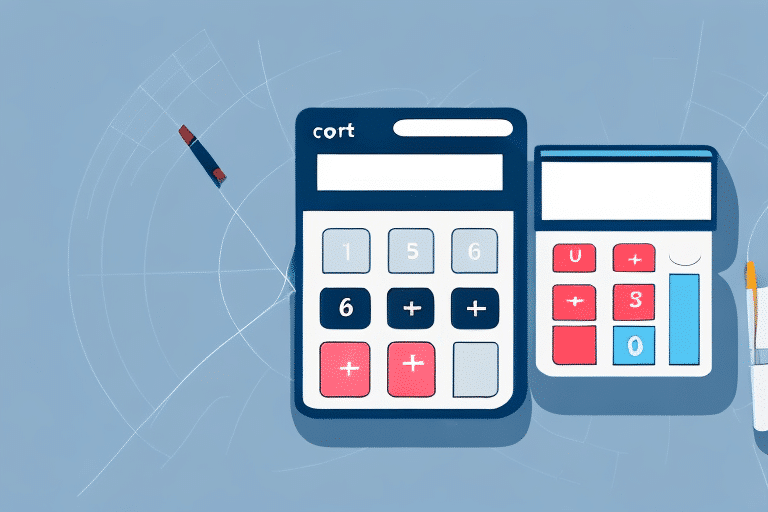Understanding the Cost Per Order (CPO) and Its Importance
Calculating the Cost Per Order (CPO) is essential for businesses aiming to make informed decisions and maintain profitability. CPO represents the total cost incurred to acquire and fulfill a single order. By accurately determining CPO, companies can assess the profitability of their products or services, identify opportunities for cost savings, and optimize their operations.
Why CPO Matters for Your Business
Understanding your CPO allows you to measure the profitability of your operations effectively. Analyzing the costs associated with each order helps identify inefficiencies, gaps in the supply chain, or issues with products or services. Businesses that grasp their CPO can make data-driven decisions that positively impact their bottom line.
Moreover, knowing your CPO assists in setting appropriate prices for your offerings. By understanding the exact cost of fulfilling an order, businesses can ensure their pricing covers expenses and generates profit. This insight also aids in negotiating better deals with suppliers and implementing cost-cutting measures without compromising quality.
Components of Cost Per Order
CPO encompasses both direct and indirect costs associated with fulfilling an order:
- Direct Costs: These include materials, labor, and shipping expenses directly tied to the order.
- Indirect Costs: These cover marketing, overhead expenses, and other costs not directly linked to a single order.
Accurately calculating CPO involves considering all these costs from advertising to shipping to customer support. Understanding these components helps identify areas where businesses can reduce costs and enhance efficiency.
Calculating Cost Per Order: A Step-by-Step Guide
To determine your CPO, follow these steps:
- Document All Costs: Include both direct and indirect expenses such as materials, labor, shipping, marketing, and overhead.
- Calculate Total Costs: Sum all costs incurred during a specific period. For example, if 1,000 orders cost $100,000 to fulfill in a month, the CPO is $100 per order.
- Analyze and Adjust: Regularly review CPO to identify trends and areas for cost reduction.
It's important to note that CPO can vary across different industries and business models. For instance, luxury product businesses may have a higher CPO due to elevated material and marketing costs, whereas businesses selling low-cost items might experience a lower CPO.
Methods for Calculating Cost Per Order
There are several approaches to calculating CPO, each with its advantages and drawbacks:
- Average Cost per Order: Total cost of all orders divided by the number of orders fulfilled.
- Pros: Simple to calculate and provides a clear overview.
- Cons: Can be skewed by outliers.
- Incremental Cost per Order: The additional cost incurred to fulfill one more order.
- Pros: Offers more granularity and highlights significant costs.
- Cons: More complex to calculate.
- Total Net Cost per Order: Total cost of fulfilling an order minus the revenue generated.
- Pros: Provides a clearer picture of order profitability.
- Cons: Revenue can vary between products and services, complicating calculations.
The choice of method depends on your industry and business model. Ensure all relevant costs, including overhead and indirect expenses, are included for an accurate CPO.
Avoiding Common Mistakes in CPO Calculation
Accurate CPO calculation requires attention to detail. Avoid these common pitfalls:
- Omitting Costs: Ensure all direct and indirect costs, such as marketing and overhead, are included.
- Inconsistent Time Periods: Use the same timeframe for both costs and order counts to prevent inaccurate results.
- Ignoring Order Variations: Different types of orders (e.g., international or expedited) may have varying costs.
- Excluding Return Costs: Returns can significantly impact CPO and should be accounted for.
- Neglecting Seasonality: Seasonal fluctuations can affect order volumes and costs, influencing CPO.
Avoiding these mistakes ensures a more accurate and meaningful CPO calculation, enabling better business decisions.
Interpreting CPO Results for Business Strategy
Once CPO is calculated, use the results to identify optimization opportunities and enhance profitability:
- High CPO: May indicate inefficiencies in the supply chain or high operational costs. Investigate and address these areas to reduce costs.
- Low CPO: Could suggest competitive pricing or efficient operations. However, ensure that quality is not being compromised.
It's crucial to view CPO alongside other metrics, such as Customer Acquisition Cost (CAC) and Customer Lifetime Value (CLTV), to gain a comprehensive understanding of business performance.
Strategies to Optimize CPO and Boost Profitability
Implement the following strategies to reduce CPO and increase profit margins:
- Streamline Supply Chain: Source materials from cost-effective suppliers and optimize logistics.
- Invest in Automation: Utilize technology to reduce labor costs and enhance operational efficiency.
- Employee Training: Equip employees with the skills and resources to minimize errors and improve customer satisfaction.
- Implement Loyalty Programs: Encourage repeat business through discounts or exclusive offers, reducing customer acquisition costs.
- Optimize Marketing Channels: Focus on high-ROI channels such as email marketing and social media to maximize marketing efficiency.
By continuously monitoring and refining these areas, businesses can effectively lower their CPO and enhance their competitive edge.
Leveraging Technology for Accurate CPO Calculations
Technology plays a pivotal role in accurately calculating and optimizing CPO. Tools such as Supply Chain Management (SCM) software and advanced analytics platforms enable businesses to automate processes, gather precise data, and gain deep insights into their operations.
For instance, integrating SCM software can streamline order processing, reduce manual errors, and provide real-time tracking of costs, making CPO calculations more accurate and efficient.
Benchmarking and Predicting Future CPO
Benchmarking Against Industry Standards
Comparing your CPO with industry benchmarks helps assess your business's competitiveness and identify areas for improvement. Utilize reports from reputable sources like Statista or IBISWorld to obtain relevant industry data.
Using Historical Data for Future Predictions
Analyzing historical CPO data enables businesses to forecast future costs, plan budgeting, and allocate resources more effectively. By identifying trends and patterns, companies can anticipate periods of increased costs and implement strategies to mitigate financial risks.
Regular Review and Continuous Improvement of CPO
Regularly reviewing your CPO ensures that your business remains efficient and responsive to market changes. Frequent assessments help identify new cost-saving opportunities, recognize operational weaknesses, and adapt to evolving market conditions.
Consistent monitoring also aids in identifying potential risks, such as supply chain vulnerabilities, allowing businesses to address them proactively.
Conclusion: Maximizing Profitability Through Accurate CPO Calculations
Accurately calculating and optimizing the Cost Per Order is vital for any business striving to make data-driven decisions and enhance profitability. By understanding the components of CPO, avoiding common calculation mistakes, and leveraging technology, businesses can effectively manage their costs and improve their bottom line.
Regularly monitoring CPO, benchmarking against industry standards, and implementing strategic optimizations ensure that businesses remain competitive and financially healthy in a dynamic market environment.




















